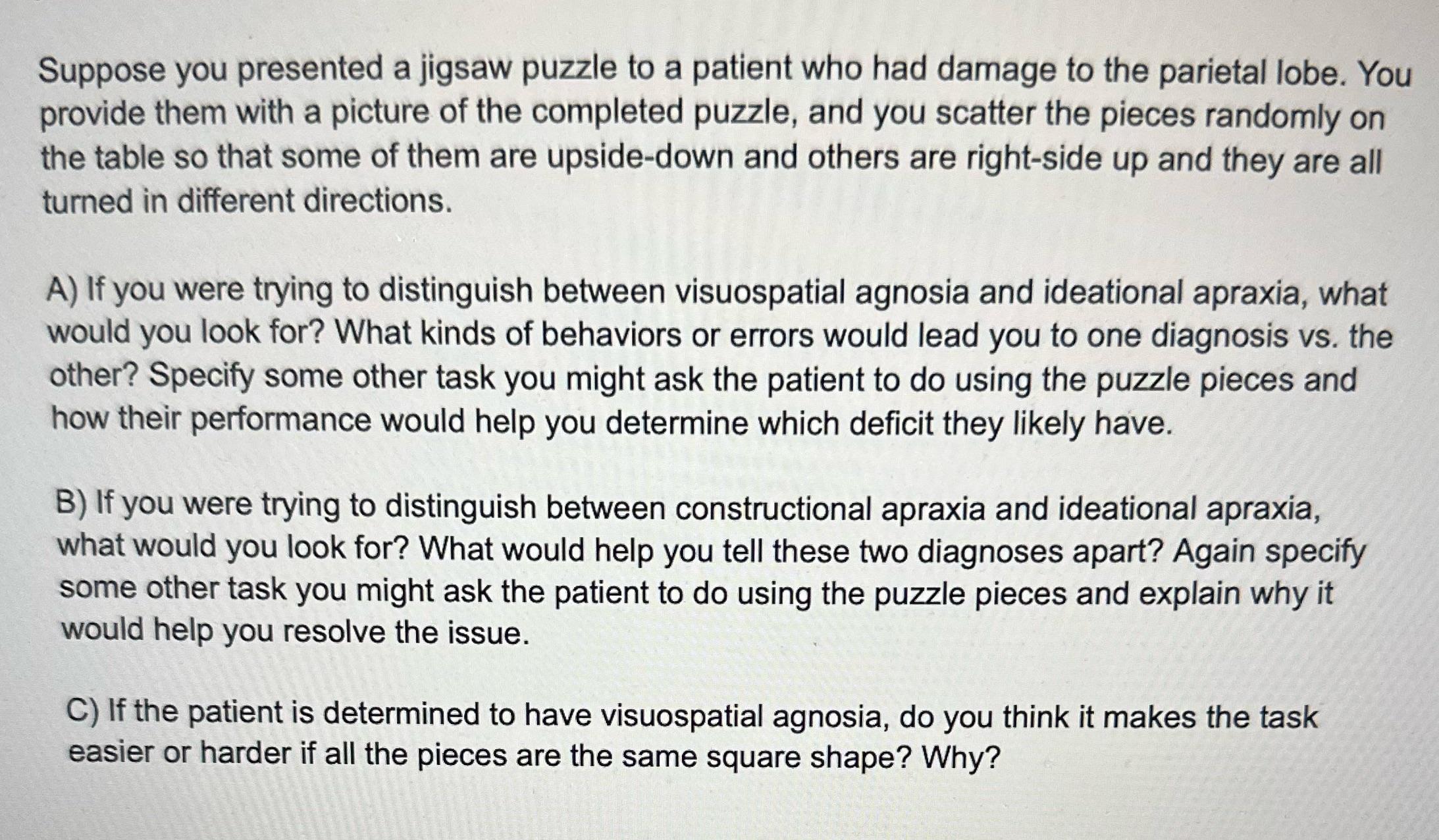Answered step by step
Verified Expert Solution
Question
1 Approved Answer
Suppose you presented a jigsaw puzzle to a patient who had damage to the parietal lobe. You provide them with a picture of the

Suppose you presented a jigsaw puzzle to a patient who had damage to the parietal lobe. You provide them with a picture of the completed puzzle, and you scatter the pieces randomly on the table so that some of them are upside-down and others are right-side up and they are all turned in different directions. A) If you were trying to distinguish between visuospatial agnosia and ideational apraxia, what would you look for? What kinds of behaviors or errors would lead you to one diagnosis vs. the other? Specify some other task you might ask the patient to do using the puzzle pieces and how their performance would help you determine which deficit they likely have. B) If you were trying to distinguish between constructional apraxia and ideational apraxia, what would you look for? What would help you tell these two diagnoses apart? Again specify some other task you might ask the patient to do using the puzzle pieces and explain why it would help you resolve the issue. C) If the patient is determined to have visuospatial agnosia, do you think it makes the task easier or harder if all the pieces are the same square shape? Why?
Step by Step Solution
★★★★★
3.39 Rating (155 Votes )
There are 3 Steps involved in it
Step: 1
A To distinguish between visuospatial agnosia and ideational apraxia observe how the patient approac...
Get Instant Access to Expert-Tailored Solutions
See step-by-step solutions with expert insights and AI powered tools for academic success
Step: 2

Step: 3

Ace Your Homework with AI
Get the answers you need in no time with our AI-driven, step-by-step assistance
Get Started


